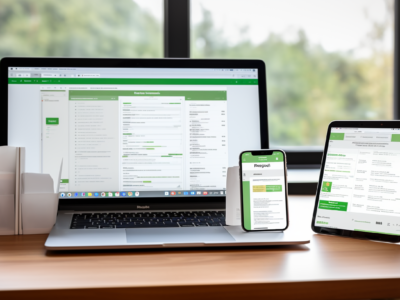With the rising demand for electric vehicles (EVs), governments and organizations have taken initiatives to encourage people to switch from gasoline-powered cars to EVs. One of these incentives is providing rebates on EV chargers, which can significantly reduce the cost of purchasing and installing an EV charger at home. By taking advantage of these rebates, consumers not only save money but also contribute towards a sustainable future.
Many countries offer various types of financial incentives for purchasing or leasing an EV, including tax credits, grants, and rebates. However, rebate programs specifically designed for EV charging equipment are becoming increasingly popular as they help remove one of the biggest barriers to widespread adoption – lack of charging infrastructure. In this article, we will explore the different types of rebates available for EV chargers, how to find them in your area, and tips on maximizing your savings with these programs.
Types Of Rebates Available For EV Chargers
With the increasing popularity of electric vehicles, governments and utility providers are offering rebates to incentivize their adoption. These rebates can come in various forms, ranging from tax credits to cash incentives. Understanding the types of rebates available for EV chargers is crucial in maximizing your savings.
One way to classify EV charger rebate is by their source – federal or state. The federal government offers a tax credit of up to $1,000 for residential charging equipment installation, while some states offer additional incentives on top of that. For example, California’s Clean Vehicle Rebate Project (CVRP) provides up to $800 rebate for home charging stations installed after January 1st, 2020. On the other hand, New York State’s Charge Ready NY program offers up to $4,000 per port for eligible public or workplace charging station installations. Therefore, it is important to research both federal and state programs before making any decisions about purchasing an EV charger.
Another factor to consider when looking at EV charger rebates is whether they apply specifically to home or public charging stations. Home charging station rebates are designed for individuals who install a Level 2 charger at their residence. Public charging station rebates aim to increase access to EV infrastructure in shared spaces such as workplaces or commercial areas. In addition to financial benefits, installing a home charger also allows you more control over your vehicle’s battery level and reduces dependence on public stations with potentially long wait times during peak usage hours. Ultimately, choosing between these two types of rebates will depend on individual needs and circumstances.
Understanding Eligibility Requirements
Eligibility requirements for EV charger rebates vary depending on the state, local government or utility company offering them. However, certain criteria apply across most rebate programs. Typically, the applicant must own an electric vehicle and have a residential address within the jurisdiction of the program. Additionally, some programs may require that the charging station be installed by a licensed contractor.
Moreover, applicants should be prepared to provide documentation such as proof of purchase or lease agreement for their electric vehicle, copy of property tax statement or utility bill showing ownership of property where charging station will be installed and receipts from any installation work done. It is important to note that meeting eligibility requirements does not guarantee approval of the application. Therefore, it is crucial to carefully review all instructions before applying to ensure compliance with all terms and conditions set forth by the respective program.
The application process for EV charger rebates varies but often requires filling out an online form or submitting paperwork via mail. Some programs may also require additional steps such as site inspections and verification of installation details before issuing payments or providing reimbursements. As part of the application process, applicants may also need to submit information about their income level since some programs offer higher rebates to those who meet specific household income thresholds. Once approved, payment can take several weeks or months depending on processing times and availability of funds. Therefore, it is recommended that applicants plan ahead accordingly when considering installing an EV charger at home in order to maximize savings through rebate opportunities available in their area.
Finding Rebate Programs In Your Area
As we now understand the eligibility requirements for EV charger rebates, it’s time to dive into finding specific programs in your area. Just like a treasure hunt, searching for rebate programs can be an exciting and rewarding process that leads you to significant savings.
Research strategies are crucial when looking for these programs. Firstly, begin by checking with your local utility company as they often offer their customers incentives to install electric vehicle chargers at home or work. Secondly, explore state government websites as many states have implemented their own incentive programs beyond federal ones. Lastly, check out national databases such as PlugShare that provides information on charging stations and possible rebate opportunities across the country.
Once you have found a program of interest, it is essential to familiarize yourself with the rebate application process. Each program may have different guidelines and requirements for submission. Be sure to gather all necessary documents and follow instructions carefully to ensure timely approval of your application. With diligent research and proper attention during the application process, maximizing your savings with EV charger rebates can become a reality without much hassle.
Tips For Maximizing Your Savings
To maximize your savings on EV charger rebates, it is important to carefully consider the installation process and cost analysis. The installation process can significantly impact how much you save with an EV charger rebate. Many utility companies offer free or discounted installation services for customers who purchase certain types of chargers. Additionally, some manufacturers may also offer installation discounts or incentives.
Cost analysis is another crucial factor when maximizing your savings on EV charger rebates. It is important to compare the costs of different chargers before making a purchase decision. Factors such as charging speed, compatibility with your vehicle, and durability should be considered in addition to price. By conducting a thorough cost analysis, you can ensure that you are getting the best value for your money while still taking advantage of available rebates.
In summary, by considering both the installation process and cost analysis when purchasing an EV charger, you can maximize your savings through available rebates. Careful consideration of these factors will help ensure that you get the best deal possible while supporting sustainable transportation options.
Contributing To A Sustainable Future
Green energy solutions are becoming increasingly important as the world moves towards a more sustainable future. One of the main goals of green energy is to reduce carbon emissions, which can have a significant impact on global warming and climate change. There are many different types of green energy solutions available today, including solar power, wind power, hydroelectricity, bioenergy, and geothermal energy.
Reducing your carbon footprint is an important step in contributing to a sustainable future. Using renewable energy sources such as electric vehicles (EV) powered by clean electricity generated from renewable sources like solar or wind power can help reduce greenhouse gas emissions that contribute to climate change. EVs have become popular in recent years due to their ability to run on battery-powered engines and eliminate the need for fossil fuels. Additionally, installing EV chargers at home or work locations will not only reduce harmful vehicle emissions but also maximize savings with rebates offered by various institutions. Overall, incorporating green energy solutions into our daily lives is crucial in reducing our environmental impact and creating a brighter future for generations to come.
Conclusion
In conclusion, taking advantage of electric vehicle (EV) charger rebates can result in significant savings for consumers while contributing to a sustainable future. By understanding the types of rebates available and eligibility requirements, individuals can find programs in their area that offer financial incentives for installing EV chargers at home or work. To maximize savings, it is important to research all available options and consider factors such as installation costs and long-term energy savings.
Ultimately, investing in an EV charger not only benefits individual wallets but also helps reduce carbon emissions and improve air quality. As Mahatma Gandhi once said, “The earth provides enough to satisfy every man’s need but not for every man’s greed.” Taking small steps towards sustainability by utilizing EV charger rebates can make a big impact on our planet’s future.












